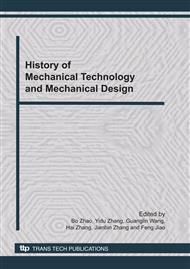p.1
p.5
p.9
p.13
p.17
p.22
p.26
p.30
Theoretical and Experimental Study on the Surface Roughness of Quenched Steel in Ultrasonic Turning with PCBN Tool
Abstract:
Surface roughness is an important evaluation index of the machined surface quality. The ultrasonic turning mechanism was described in detail and the mechanism reducing surface roughness in ultrasonic vibration turning was obtained in this paper. Meanwhile, ultrasonic turning experiments were carried out to verify the theoretical analysis. Theoretical and experimental research results show that machined surface roughness of quenched steel in ultrasonic turning is very close to geometric surface roughness, resulting in smaller surface roughness than that in ordinary turning.
Info:
Periodical:
Pages:
1-4
Citation:
Online since:
November 2010
Authors:
Keywords:
Price:
Сopyright:
© 2011 Trans Tech Publications Ltd. All Rights Reserved
Share:
Citation:


